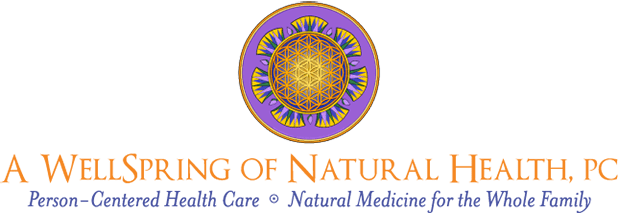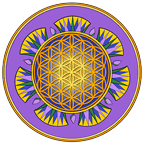By Mitchell Bebel Stargrove
After an onslaught of headaches, Nancy decided to change things in her life so she would never suffer through that experience again. She had tried aspirin and innumerable home cures suggested by friends, but nothing provided lasting relief. Then a relative mentioned hearing about acupuncture. It sounded crazy: being poked by needles to reduce pain. But why not? Nothing else had worked and a billion Chinese couldn’t all be wrong. So she took a chance and discovered the art of acupuncture for herself.
In medicine big news is usually about what’s new; but with acupuncture it’s what’s old that has become the major discovery. During the last twenty years, Americans have become familiar with images of the seemingly miraculous, and paradoxical, use of acupuncture needles for anesthesia during surgery. Use of acupuncture for an increasing number of athletes reduces the pains of injury and promotes rapid healing. Lately acupuncture has gained popularity due to lasting successes for people seeking freedom from addictive drugs ranging from nicotine to crack. We, as acupuncture practitioners, are proud to share in this important work.
For the average acupuncturist these widely publicized uses of acupuncture represent only a small part of day-to-day practice. In fact, we devote most of our time to treating people for acute injuries and illnesses or for chronic conditions like indigestion, anxiety, back pain and sciatica.
Classical Chinese medicine is perhaps the most ancient system of medicine in wide practice today. When people speak of “traditional” medicine, they often refer to conventional, modern medicine, technically known as “allopathic” medicine. From a historical perspective, standard medicine is a mere babe one or two hundred years old, while Chinese medicine is truly traditional because it has been practiced for 3000 years.
Like most schools of natural healing, Chinese medicine is rooted both in the royal court and in the countryside. Medicine fostered by the Chinese nobility comprises a system of diagnosis and treatment based on extensive study of scholarly texts, rigorous examinations, and formal practice. Chinese folk medicine abounds in lore and traditions derived from immediate needs, local resources and continual experimentation. Over time, the imperial medicine incorporated many elements of folk healing.
Primary tools of the physician in traditional Chinese medicine a thousand years ago included herbs, exercise, nutrition, massage, divination, and acupuncture. Ultimately diagnostic analysis and therapeutic responses developed for the whole range of human ailments. Through thousands of years of practice and much fruitful debate among various philosophical schools, Chinese medicine has evolved into a comprehensive health care system. Current acupuncture practice follows the path of our honorable predecessors, while pragmatically integrating much of modern science and conventional medicine. Lacking laboratory diagnosis, the physicians of ancient China developed sensitivity and rapport with their patients by using “low-tech” methods of ascertaining what was happening inside their patients. Just as physicians did a thousand years ago, today’s trained acupuncturists ask their patients about their experience of illness. We listen not just to the stories of their lives and ailments but also to the tone of their voices and choice of words. We always feel our patient’s twelve pulses, abdomen and other areas of concern. We look at each person’s tongue and their way of carrying themselves. We even explore the senses of smell and taste. In this way we use traditional Chinese physiology to formulate a diagnosis in the metaphorical language of “Dampness”, “Heat”, “Deficiency”, “Constraint”, etc. We get to know the particular way each patient experiences his or her “disease” as much as we try to put a conceptual label on their disorder.
Chinese philosophy sees natural processes as interactions within an organic unity. Like water and fire, the polarities of “Yin” and “Yang” represent complementary aspects of a greater whole rather than separate and opposing entities. Similarly, in health care, we integrate our whole beings to manifest a spectrum of densities from the slow solidity of bone to the lightning flash of thought. Illness is the natural outcome of imbalances in our lives and in our bodies. Thus, when we work too hard, worry too much, don’t exercise and play enough, or eat too much sweet or spicy food, we fall out of harmony with ourselves and our environment. These dysfunctional patterns are the ground upon which disease grows. Current conventional medicine is just beginning to reunite the “mind” and the “body”. As in Chiropractic and Naturopathic medicine, this predicament is not an issue for the physician trained in traditional Chinese medicine. Acupuncture has always been part of safe, effective, and holistic health care.
The philosophy behind Chinese medicine becomes meaningful when we see how it applies to real life situations such as Nancy’s. Nancy’s headaches were part of a common syndrome in our society, “Liver Constraint”, or as we might say, “feeling stuck”. The Liver or “Gan” of Chinese physiology is far more than the organ familiar to the western anatomist. Rather, “Liver” is a set of functions and characteristics operating within the bodymind. The Liver functions primarily to maintain the flow of life, particularly the movement of blood, Qi (vital energy) and emotions. The Liver governs our ability to respond flexibly to a changing environment.
While the Liver facilitates the smooth flowing expression of emotions, it has greatest affinity for anger. Traditional Chinese medical texts teach that anger expresses the righteousness of the soul and is a healthy response when appropriate and immediate. A complex pattern of physical and emotional problems result when emotions, particularly anger, are held back from expression. When we tighten up and restrain our anger, it starts to come out in inappropriate ways. We might soon find bottled-up anger being misdirected in uncontrollable bursts rather than in a spontaneous flow of direct response to wrongful acts.
We lose creativity and resilience whenever we tighten up with tension. Psychic pressure builds up inside. We get increasingly impatient and irritable. Soon we become tense and sore in our neck, shoulders and back, stressed out in our relationships, and hypersensitive to foods and all sorts of environmental stimuli. This pattern of self-constraint impairs free circulation of energy and blood in the body and with time can contribute to a variety of symptoms: cold hands and feet, menstrual cramps, carpal tunnel syndrome, back pain and muscle tension, high blood pressure, feelings of frustration, apathy, and depression, or, in Nancy’s case, headaches.
An acupuncturist will treat Liver Constraint using both points that invigorate the circulation of the body’s blood and energy and herbs that dredge the Liver to release old blockages. Especially when combined with exercise, these therapeutic processes enable smooth and easy flow on all levels. Renewed vitality, greater flexibility, and an improved sense of well-being result. As she heals, a patient like Nancy will be relieved not only of her headaches, but also old emotions. She becomes less irritable, more self-expressive, and more exuberant.
Although Nancy feels noticeably better very soon after, the acupuncturist needs to remind her that the profound processes of nature are not quick and easy. Her headaches and the lifestyle that contributed to them were many years in the making. As her old patterns unravel, she needs to pay attention to her attitude and behavior, and remain focused on building a new, healthier way of life. A person like Nancy will consider her work with acupuncture a turning point in her life and thrive in the freedom and strength that the changes in her life have brought. Acupuncture is a powerful tool for personal healing and the treatment of disease.
© Health Resources Unlimited, PC, 1993, 2001
Mitchell Bebel Stargrove, N.D., L.Ac., is a Naturopathic Physician and Licensed Acupuncturist providing personalized integrative health care and facilitating transformational healing at A WellSpring of Health, Beaverton, OR. Dr. Stargrove is the coordinator and editor of IBIS (the Integrative BodyMind Information System), an encyclopedic reference work of natural medicine published for health care professionals; within IBIS, he also was contributing editor of the acupuncture section. He is also the Editor of and a major contributor to Interactions: IBIS Guide to Drug-Herb and Drug-Nutrient Interactions. Dr. Stargrove also teaches History of Medicine at The Oregon College of Oriental Medicine. He shares his life with his wife, Dr. Lori Beth Stargrove, and their three children: Raphael, Tara and Sage. On many evenings, Dr. Stargrove runs the Paracelsus Internet discussion group for healthcare professionals around the world and the “HealthWWWeb: Integrative Medicine, Natural Health and Alternative Therapies” homepage on the World Wide Web (URL: http//www.HealthWWWeb.com/).


